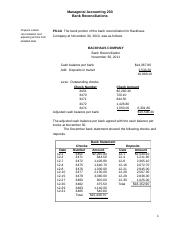Content

In addition, opening balances are important if you transfer your accounts from one accounting system to another. In this case, the last entry in the old accounts is the opening balance in the new accounts. In the value of liability the particular liability account gets credited and vice-versa. Creditors a/c, Bills payable a/c, Bank loan a/c etc., are a few most common examples of liability accounts. For this transaction, the credit column will remain unchanged for this account.
The Accounting Program balances encumbrance balance type entries using the reserve for encumbrance account. Each encumbrance journal is balanced by balancing segment value , encumbrance type, and reserve for encumbrance account. The Entered Currency Balancing Account is used opening entry meaning by Subledger Accounting to balance foreign currency subledger journals by the entered currency and balancing segment value. If you remove the balance account information from accounting setups, Subledger Accounting cannot derive the CCID for Balance by currency rows.
Drawings Account
Students can either send us the homework via email or they can upload it to our online form here. For a quicker response, You can also chat with us at WhatsApp and submit homework directly. You are sure to get a response from our side within 10 minutes. Hans Daniel Jasperson has over a decade of experience in public policy research, with an emphasis on workforce development, education, and economic justice. Congress, federal agencies, and policymakers in several states.

For actual journal entries, the GL date must be in an open or future enterable GL period. Bookkeeping is the process of tracking and recording an entity’s financial transactions in an organised manner. The cost of paying someone to do your homework varies depending on the service and the type of assignment.
Subledger Journal Entry Definition Overview
Sign up for accounting software to easily create and manage your opening balance equity account here. Maintaining a record of the closing and opening balance in the financial accounts of your business is a pillar of strong accounting practises. This is one of the main aspects of managing your cash flow and keeping track of a company’s financial health. In case all assets exceed all liabilities, the excess will be the value of capital which is showed credit side in the opening journal entry. If however, liabilities are more than the value of all assets, then the resulting excess will be goodwill and it will be debited in the opening journal entry.
- As it is the first entry in the new financial year, it is called Opening Journal Entry.
- Salary a/c, Rent a/c, Commission paid a/c etc., are a few most common examples of expense accounts.
- Any other items that have not been handled must be carefully identified and incorporated through journal entries.
- The party identifier is null if any of the above validations fail.
- These are the sequence identifiers and values that correspond to a valid document sequence at the time the journal entry is created.
- These are already been posted to appropriate accounts under the single entry system.
It’s better at checkbook balancing than for company accounting, which has a lot of accounts. In a double-entry bookkeeping system, a journal records the date of a transaction, which accounts were affected, and the balances. As such, transactions must be verified and the corresponding journal entries cross-checked for accuracy. Whether the books are completed manually or digitally, credits and debits on affected accounts must be allocated according to standard accounting rules.
Subledger Journal Entry Definition
We have listed our standard pricing plans for popularly used writing services. For other kind of assignments, You can get a free instant quote from us using our online form. This is an exact description through which anyone can easily understand about how to know the various phases of journal entry.
According to matching and revenue recognition principles, these entries are entered in the general ledger at the ending of an accounting period. These entries indicate the completion of an accounting period with a balance that can be moved from a temporary to a permanent account, or from one accounting period to the next. The closing entry in the case of temporary accounts zeros out the account, and any amount remaining is transferred to a more permanent account. To move or allocate an expense or income from one account to another transfer entries are used. For example, Reliance Ltd. transfers cash from its primary account to a subsidiary account.
This chapter provides detailed information on the elements that make up a subledger journal entry and the validations enforced by Subledger Accounting. Where applicable, information is also provided on the default values stored in subledger accounting tables. A journal is a detailed account that records all of a company’s financial activities.
How do you record an opening entry in accounting?
How to Pass an Opening Entry? When the next financial year begins, the accountant passes one journal entry at the beginning of every financial year in which he shows all the opening balance of assets and all the liabilities include capital. After that, the journal entry is called an opening journal entry.
Is opening entry and journal entry the same?
The journal entry is recorded at the beginning of an accounting period for opening the books of accounts. It supports bringing forth the balances in the ledger accounts and is called the opening entry. The opening entry for the ledger account is based on the opening balance sheet.